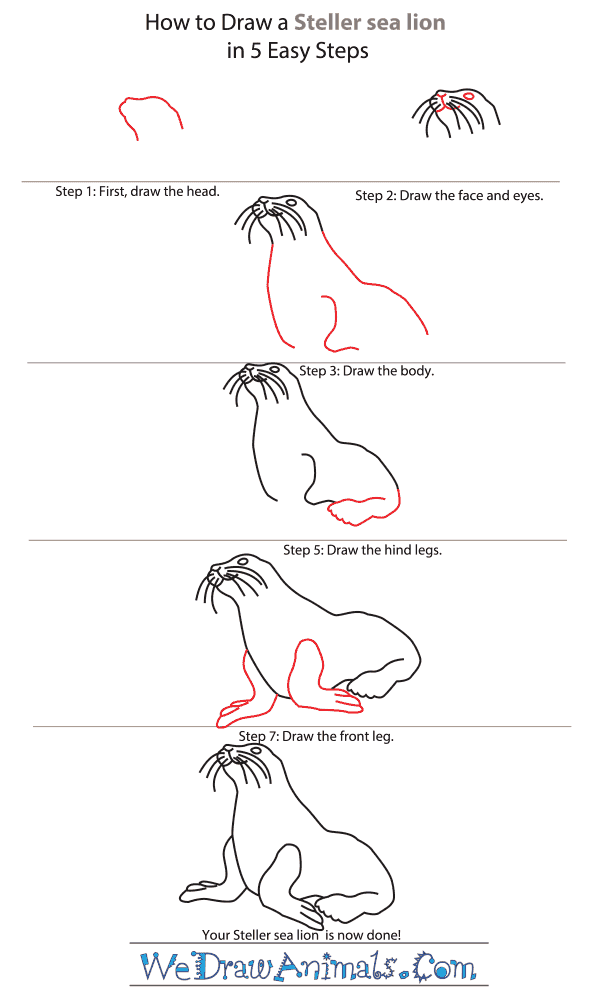In this quick tutorial you'll learn how to draw a Steller Sea Lion in 5 easy steps - great for kids and novice artists.
The images above represent how your finished drawing is going to look and the steps involved.
Below are the individual steps - you can click on each one for a High Resolution printable PDF version.
At the bottom you can read some interesting facts about the Steller Sea Lion.
Make sure you also check out any of the hundreds of drawing tutorials grouped by category.
How to Draw a Steller Sea Lion - Step-by-Step Tutorial
Step 1: Let's start our steller sea lion! First, draw a line that curves upwards, and then back down. This is the head.
Step 2: Alright, let's add some detail to the face. Draw an oval for the eye, two half circles for the nose, and long lines protruding downwards for his dangling whiskers.
Step 3: Now let's draw the body. Draw two lines on each side and a goofy "L" shaped line at the bottom middle.
Step 4: Draw al line that goes down and back around for the tail. Make sure to give it indentation at the edge or your stellar sea lion won't swim as fast!
Step 5: Now you can draw the two front flippers. Draw one on each side extending outwards.
Interesting Facts about the STELLER SEA LION
The Steller Sea Lion is a member of the seal family and the scientific term for them is Eumetopias jubatus. Other common names for this animal are the Steller’s Sea Lion and the Northern Sea Lion. Their name Eumetopias jubatus means “maned one with the broad forehead.” It is the only member of the species Eumetopias, is the largest seal with external ears, and the largest seal except for the Elephant Seal.
Did you know?
- The animal was first documented in the year 1741.
- They are almost 11 feet long.
- This species can be over 2,000 pounds in weight.
- They have more than 1 baby on rare occasions.
- The males will defend their females for up to 60 days.
These pale yellowish red animals are native to Alaska and are near threatened to extinction. Their breeding ground has a range from eastern Russia to southern California. While they can mate with many females, mating isn’t forced. They prefer hunting in schools of fish, but also invade fish farms even if they are for freshwater types. Occasionally they eat smaller seal species’ and otters, but can become food for killer whales and white sharks.






